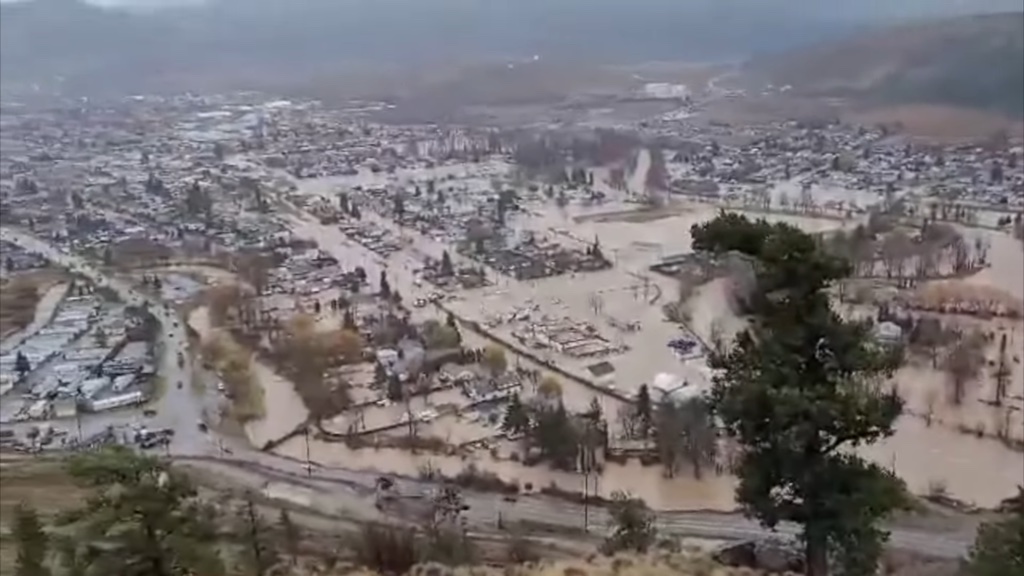
Panelists share local perspectives on the 2021 B.C. floods at CatIQ Connect
February 23, 2023
By Glenn McGillivray
 Merritt, B.C., flooding in November 2021. Image: YouTube CC/Stepan_.
Merritt, B.C., flooding in November 2021. Image: YouTube CC/Stepan_. One of several panels at the recent CAtIQ Connect conference in Toronto offered a first-hand, often emotional look at the fallout from the atmospheric river-driven flooding that inundated a wide area of southwestern B.C. in November 2021.
Titled BC Floods – Local Perspectives, the group looked at impacts of the severe rainfall event that targeted parts of the province with deep tropical moisture from the Central Pacific. Rain began along the coast of B.C. on Nov. 13 and persisted through to the evening of Nov. 15, bringing totals of nearly 300 mm for some areas.
Significant flooding ensued as numerous rivers overflowed their banks and wastewater systems were overwhelmed, with numerous towns and population centres forced to evacuate. Major infrastructure was damaged as well, with critical highways and rail lines washed out. For a time, the Port of Vancouver – Canada’s largest port – was isolated from the rest of Canada.
Along with widespread physical damage, the event caused several indirect impacts, including food and water shortages in several communities, supply chain issues, and the need for province-wide gasoline rationing.
Economic damage has been pegged at close to $5 billion with the cost to Canadian insurers totalling $675 million.
While not the costliest loss in Canadian history, some have called it the most impactful event ever to occur in the country.
I moderated the panel that included Bobby Sekhon, warning preparedness meteorologist with the Meteorological Service of Canada; Linda Brown, former mayor for the City of Merritt, B.C.; and Tyrone McNeil, president and Tribal Chief of the Stó:lo Tribal Council.
Sekhon provided an overview of the meteorology of the event, describing what an atmospheric river is, how the storm physically played out, and explaining some of the procedures and processes involved in forecasting and communicating warnings around a disturbance of this type and magnitude.
Brown and McNeil then put faces on the event, discussing not only the physical impacts of the storm on their respective communities, but also cataloging the human impacts, from displacement of evacuees to increased homelessness and a multitude of other factors.
Brown related stories of Merritt residents being flung far and wide due to the evacuation of the city, the loss of senior civil servants who never returned to their jobs after the event, worsening homelessness due to the flood, and the profound damage to municipal infrastructure and private homes, all while a poignant drone video of the water-sodden city quietly played in the background.
McNeil related similar stories about the impacts of the flood on his First Nations community, telling stories of various levels of government bumping into each other and precious time escaping as his people were displaced and, in many cases, left with nothing.
Together, the panel reminded attendees of the human side of such tragedies, one that is all too often forgotten as focus is placed on putting pipes, cement and asphalt back in place.
Glenn McGillivray is the managing director of the Institute for Catastrophic Loss Reduction.
Print this page